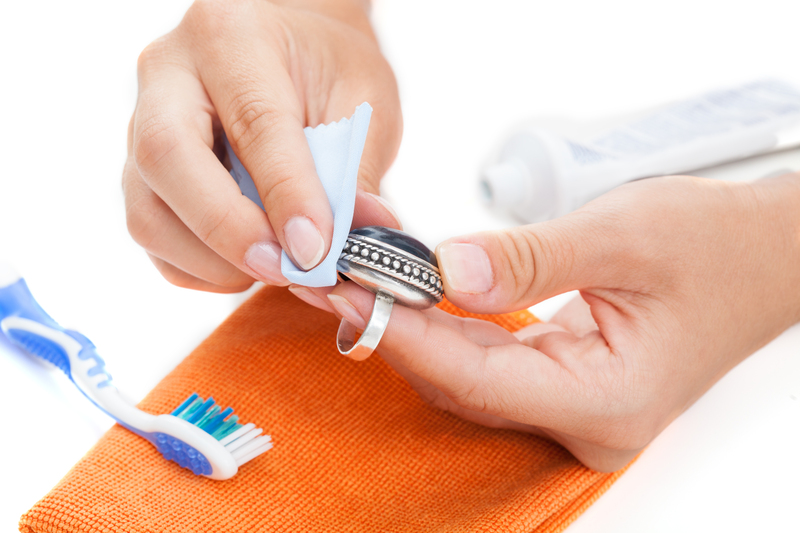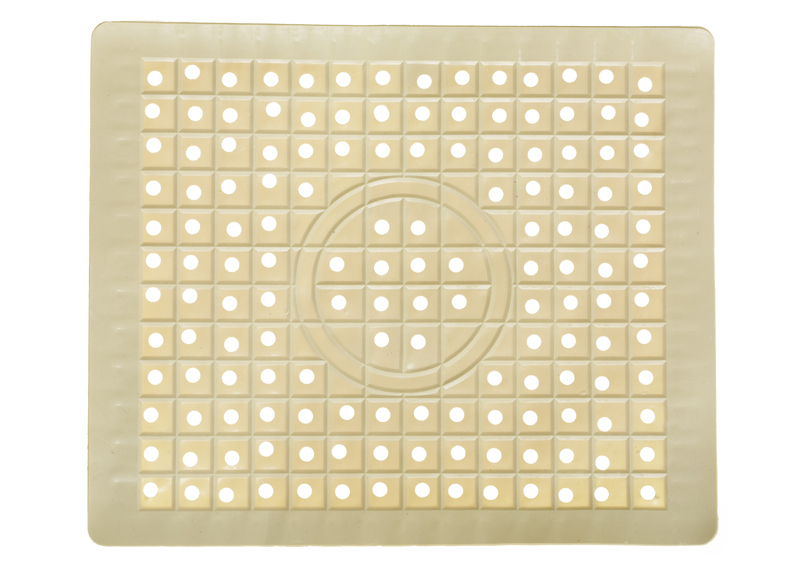Unveil a Clean Stovetop with These Burnt Residue Solutions
Posted on 22/05/2025
Unveil a Clean Stovetop with These Burnt Residue Solutions
Does your kitchen stove bear the stubborn scars of last night's dinner? You're not alone! Many home cooks struggle with tough, burnt-on residue that clings to stovetops. Whether you're dealing with baked-on spills or blackened grease that won't budge, unveiling a truly clean stovetop is possible--if you know the right burnt residue cleaning methods. In this comprehensive guide, we'll explore reliable techniques, tools, and tips to revive your stovetop's gleam. Say goodbye to past stains and unveil the sparkling cooktop you deserve!
Why Cleaning Burnt Residue from Your Stovetop Matters
- Hygiene: Food residue can breed bacteria and create unpleasant odors.
- Appliance Longevity: Burnt-on grime can damage sensitive stove components.
- Cooking Efficiency: Heat distribution is impacted by residue buildup.
- Safety: Excess debris can lead to smoke and fire hazards.
- Visual Appeal: A clean cooking surface enhances your kitchen's overall look.
Removing burnt residue from your stovetop isn't just about looks--it's about preserving health, function, and safety!

Common Causes of Burnt Stovetop Residue
Understanding what causes burnt build-up will help you target your cleaning efforts and prevent future stains. Stovetop residue most often results from:
- Spills of sugary or acidic foods
- Splattered oils and fats
- Boil-overs while simmering liquids
- Pots and pans left unattended on high heat
- Lack of regular stovetop maintenance
*Leaving residue unattended for too long allows it to carbonize, which makes it tougher to remove. The sooner you act, the easier your cleaning task will be!*
Essential Tools & Ingredients for Stovetop Cleaning
To unveil a sparkling clean stovetop, stock your cleaning arsenal with the following:
- Baking soda (a natural abrasive and deodorizer)
- White vinegar (cuts through grease and stains)
- Microfiber cloths or soft sponges
- Plastic or silicone scraper
- Dish soap (removes fats and surface grime)
- Lemon juice (natural degreaser and fresh scent)
- Putty knife or razor blade (for glass or ceramic, with caution!)
- Commercial stovetop cleaner (as a last resort)
- Gloves (to protect your hands during tough scrubs)
Pro tip: Always check your manufacturer's recommendations before using any new cleaner or scraper!
How to Remove Burnt Residue from Different Stovetop Types
Gas Stovetops: Conquering the Grime
-
Disassemble removable parts (grates, burners, knobs).
- Soak grates and burner caps in hot, soapy water for 15-30 minutes.
- If dealing with heavy burnt-on grease, add a few tablespoons of baking soda to the soak.
-
Address stuck-on residue.
- Sprinkle baking soda over burnt spots. Spray with vinegar until foaming occurs.
- Let sit for 10-15 minutes, then scrub gently with a damp sponge or cloth.
-
Scrape off stubborn areas gently.
- Use a plastic scraper or old credit card to lift residue.
- Avoid using metal tools to prevent scratches.
-
Clean and shine the surface.
- Wipe with a clean microfiber cloth and dry.
- Reassemble once completely dry.
Electric Coil Stovetops: Banishing the Burnt Marks
- Remove electric coils and drip pans (when cooled and safely unplugged, if removable).
- Clean drip pans by soaking and scrubbing with a mixture of baking soda and dish soap.
- Wipe the stovetop's surface with a mix of vinegar and water, focusing on burnt residue.
- Stubborn burnt-on mess? Make a baking soda paste (equal parts baking soda and water), apply, let sit 15-20 minutes, then scrub with a non-abrasive pad.
- Rinse, dry, and reassemble your stovetop.
Glass & Ceramic Stovetops: Unveil a Gleaming Surface
- Sprinkle baking soda generously on cool, dry burnt areas.
- Spray white vinegar to produce a cleansing foam that lifts residue.
- Lay a damp, warm microfiber cloth over the areas. Let it sit for 15-20 minutes.
-
Gently wipe and buff.
- Use a clean cloth to wipe up loosened grime.
- For extremely stubborn spots, carefully scrape with a razor blade held at a low angle (avoid deep scratches!)
- Finish with a final rinse and dry for a clean, streak-free shine.
*Always avoid abrasive pads and harsh cleaners on glass or ceramic surfaces!*
Natural Burnt Residue Solutions for a Clean Stovetop
If you prefer chemical-free alternatives, these natural remedies can effectively remove burnt stovetop stains:
-
Lemon & Baking Soda Paste:
- Mix lemon juice and baking soda into a thick paste.
- Apply to burnt spots and let sit for 10-15 minutes before scrubbing and rinsing.
-
Salt & Vinegar Scrub:
- Combine coarse salt and white vinegar for a gentle abrasive scrub suitable for metal stovetops.
-
Hydrogen Peroxide (for tough cases):
- Apply a small amount mixed with baking soda for added stain-busting power on persistent burnt residue.
-
Hot Towel Method:
- Lay a hot, damp towel over caked-on messes for 5-10 minutes to loosen residue, then wipe away.
These natural stovetop cleaning methods are gentle yet powerful, and safe for your family and the planet.
Burnt Residue Prevention: Keeping Your Stovetop Clean
Daily Habits for a Spotless Stovetop
- Wipe after every use with a damp microfiber cloth to prevent buildup.
- Clean spills immediately so they don't have a chance to burn onto the surface.
- Deep clean weekly using one of the solutions above.
- Use pan lids to minimize splatters.
- Line drip pans or trays with aluminum foil (for electric stoves) to catch accidental spills, replacing foil regularly.
With these simple practices, you can maintain a spotless stovetop and minimize the need for heavy-duty burnt residue cleaning.
Choosing the Best Cleaning Products
- Environmentally-friendly store-bought cleaners: Look for non-toxic brands made for your type of cooktop.
- Avoid bleach or ammonia on glass, ceramic, or enamel stoves.
- Always test new products in a small area before full use.

FAQs: Mastering Stovetop Burnt Residue Solutions
-
Q: What's the fastest way to clean burnt residue off my stovetop?
A: For most surfaces, a baking soda and vinegar mixture, left to fizz and followed by a gentle scrub, is quick and highly effective! -
Q: Is it safe to use a razor blade on glass stovetops?
A: Yes, as long as you hold it flat and use gentle pressure. Always avoid corners and do not use on non-glass surfaces. -
Q: Can I use oven cleaner on my stovetop?
A: Only if specifically designated for stovetops, as some formulas may damage the finish of your surface. -
Q: How often should I clean my stove to avoid burnt residue?
A: Ideally, wipe after every use, and deep-clean thoroughly once a week or when spillovers occur.
Final Thoughts: Enjoy a Clean, Burnt-Residue-Free Stovetop
Unveiling a clean stovetop doesn't have to be an impossible chore. Whether you're using home remedies, store-bought cleaners, or smart daily habits, you can banish burnt-on messes for good. Remember to always use gentle cleaners first, follow your manufacturer's recommendations, and anticipate those spills before they become a problem.
Ready to unveil a spotless stovetop? Equip yourself with these burnt residue solutions and enjoy a sparkling kitchen every day!
Share Your Tips!
How do you keep your stove shining? Share your favorite stovetop cleaning solutions or tricks in the comments below. Let's keep our kitchens beautiful together!




